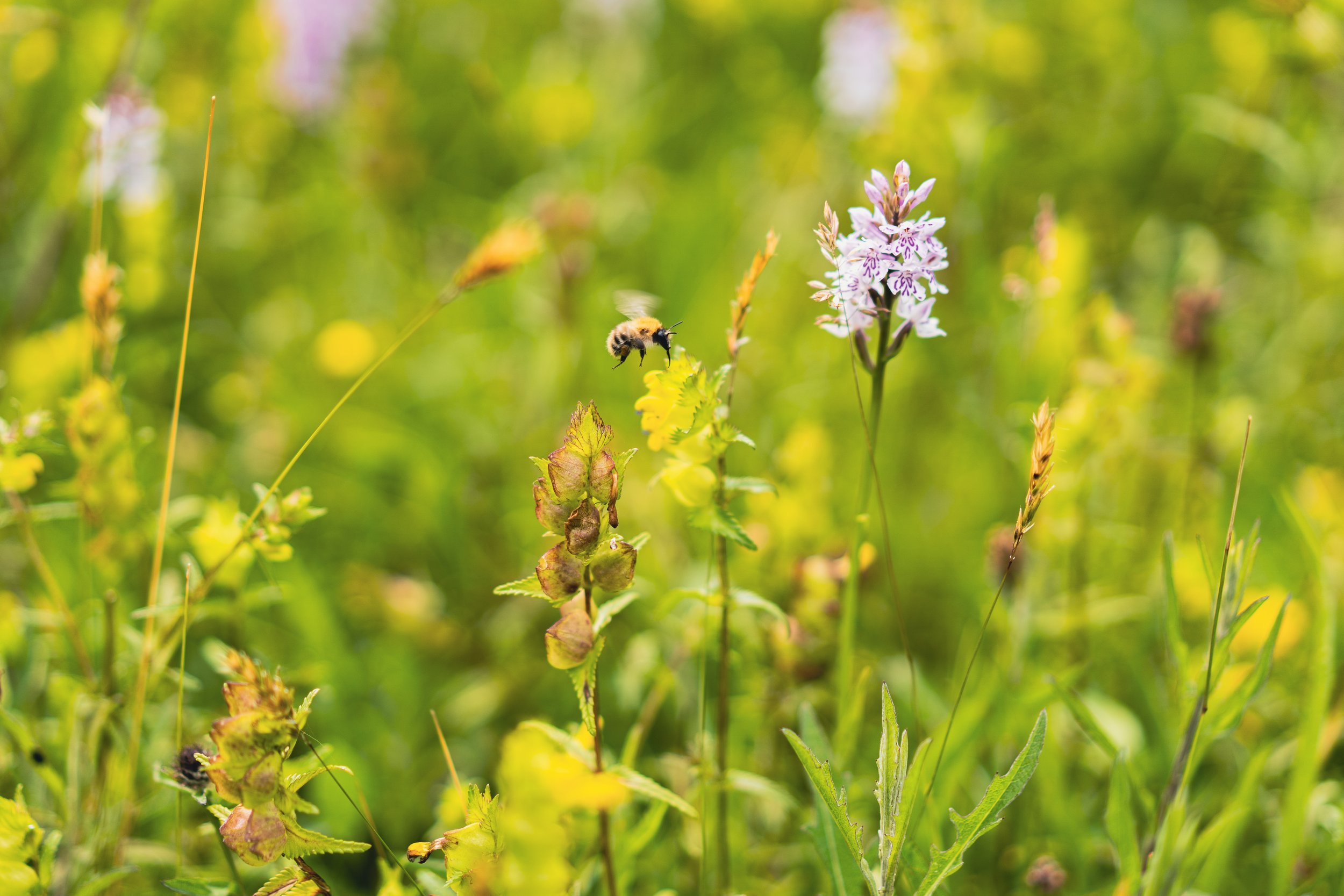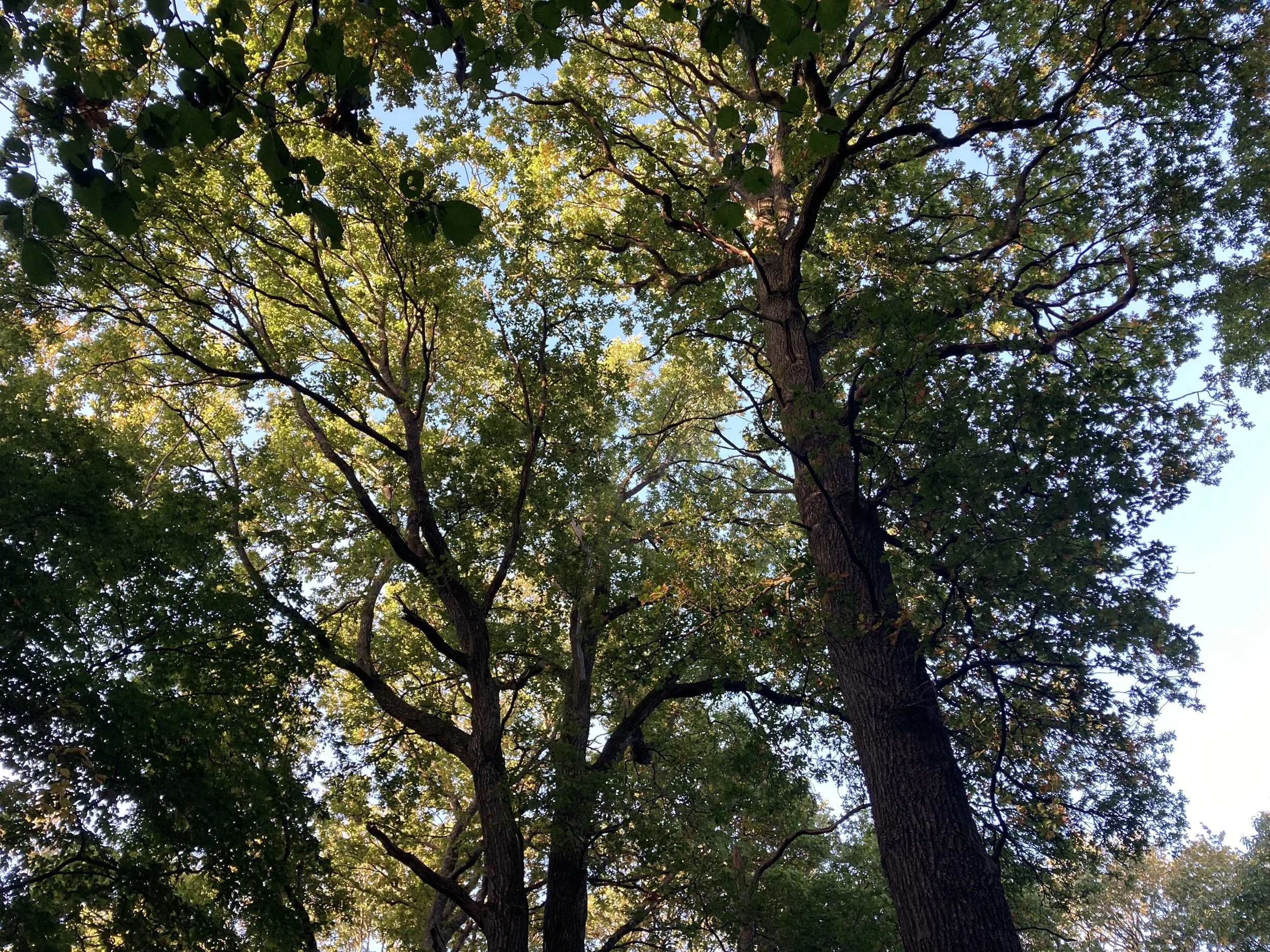
Habitat Restoration.
-

Wildflower Meadows
We have many acres of grass – some pasture, some meadows.
The pastures were for the dairy and the meadows for silage, hay and winter fodder. Silage, though powerful, is always cut too early. The hay meadows, though cut later, have been “improved” to reduce diversity.
We are keeping some pastures for cattle and their dung. We are slowly extending our existing medieval Wildflower Meadows through careful seed sweeping, power harrowing and spreading on the “improved” land.
-

Woodland
We have many acres of woodland – some ancient, some planted.
The planteds were “farm woods” - oak standards for building, chestnut coppice for fencing, hazel coppice for hurdles and ash for tools. Over the unmanaged years they have grown to a useless size; with light and life excluded. The ancients we are leaving to grow and fall and grow in their timeless rhythms.
We are slowly removing the oak standards and replanting. We are bringing back the rotational coppices and letting light back into the understorey.
-

Bugs, Beetles, Moths & Butterflies
We don’t have enough of these little things here. We have even less than we did. I think. The “Windscreen Phenomenon” provides good evidence that we have lost at least 50% of our flying insects in the last 15 years. It seems the sight and sound in the “good” meadows, ponds and woodlands have continued; in the “bad’ has collapsed. But we are not sure.
All our efforts are to protect the areas where we have insects and restore the areas where we do not. Next year we are undertaking a thorough, scientific research study in each field, each pond and each piece of woodland at least to understand what we have.
-

Hedgerows
We have many miles of hedges – all of them planted to enclose the fields and to keep the livestock in or out.
Primarily hedges were planted with vicious blackthorn and, at regular intervals, a stand of hazel coppice for the stakes and heathering at laying. Hedges provided shade in the summer and shelter in the winter. Hedgerow oaks were not encouraged as they could flatten a corn crop by creating a damaging downdraft wind. Most of the hedges had “bolted” to a height that provided neither a stockproof boundary nor a warm residence.
We are laying all the existing hedges using hazel from the previously coppiced woodland. We are re-planting many of the hedges taken out after the war, to provide nesting sites, warmth and shelter. We are planting individual fruit trees at regular intervals.
-

Streams, Ponds & Rivers
We have some ponds and streams – all of them created; for house carp, drainage or irrigation.
The medieval ponds were designed to harvest carp for the house and the straight streams to drain the straight hedged fields. The contour streams were designed to provide flushed water meadow irrigation.
We are relocating the carp to give the frogs and water-based bugs a chance. We are digging eddy ponds in each field on the straight streams to slow the flow and increase summer water retention. We are repairing the water meadow streams to enable them to provide biomass rich irrigation.
-

Birds & Bats
We have many Bats and Birds. Feeding on the Seeds, Bugs, Moths and Butterflies we still have. But we have less than we did. 75 years ago we had over 100 House Martin nests on the house. 10 years ago we had 15. This year we had 1.
We are honoured to have the very rare Barbastelle Bats foraging over our land from their roost 20 miles away. It must be worth the trip but we need to do more…